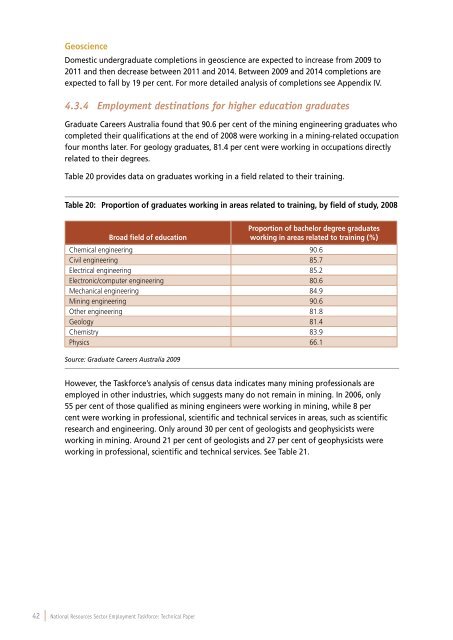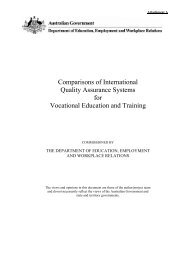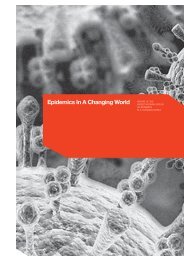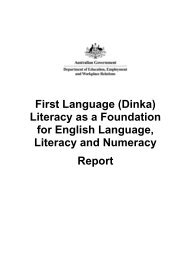National Resources Sector Employment Taskforce Technical Paper
National Resources Sector Employment Taskforce Technical Paper
National Resources Sector Employment Taskforce Technical Paper
Create successful ePaper yourself
Turn your PDF publications into a flip-book with our unique Google optimized e-Paper software.
Geoscience<br />
Domestic undergraduate completions in geoscience are expected to increase from 2009 to<br />
2011 and then decrease between 2011 and 2014. Between 2009 and 2014 completions are<br />
expected to fall by 19 per cent. For more detailed analysis of completions see Appendix IV.<br />
4.3.4 <strong>Employment</strong> destinations for higher education graduates<br />
Graduate Careers Australia found that 90.6 per cent of the mining engineering graduates who<br />
completed their qualifications at the end of 2008 were working in a mining-related occupation<br />
four months later. For geology graduates, 81.4 per cent were working in occupations directly<br />
related to their degrees.<br />
Table 20 provides data on graduates working in a field related to their training.<br />
Table 20: Proportion of graduates working in areas related to training, by field of study, 2008<br />
Broad field of education<br />
Proportion of bachelor degree graduates<br />
working in areas related to training (%)<br />
Chemical engineering 90.6<br />
Civil engineering 85.7<br />
Electrical engineering 85.2<br />
Electronic/computer engineering 80.6<br />
Mechanical engineering 84.9<br />
Mining engineering 90.6<br />
Other engineering 81.8<br />
Geology 81.4<br />
Chemistry 83.9<br />
Physics 66.1<br />
Source: Graduate Careers Australia 2009<br />
However, the <strong>Taskforce</strong>’s analysis of census data indicates many mining professionals are<br />
employed in other industries, which suggests many do not remain in mining. In 2006, only<br />
55 per cent of those qualified as mining engineers were working in mining, while 8 per<br />
cent were working in professional, scientific and technical services in areas, such as scientific<br />
research and engineering. Only around 30 per cent of geologists and geophysicists were<br />
working in mining. Around 21 per cent of geologists and 27 per cent of geophysicists were<br />
working in professional, scientific and technical services. See Table 21.<br />
42 | <strong>National</strong> <strong>Resources</strong> <strong>Sector</strong> <strong>Employment</strong> <strong>Taskforce</strong>: <strong>Technical</strong> <strong>Paper</strong>
















